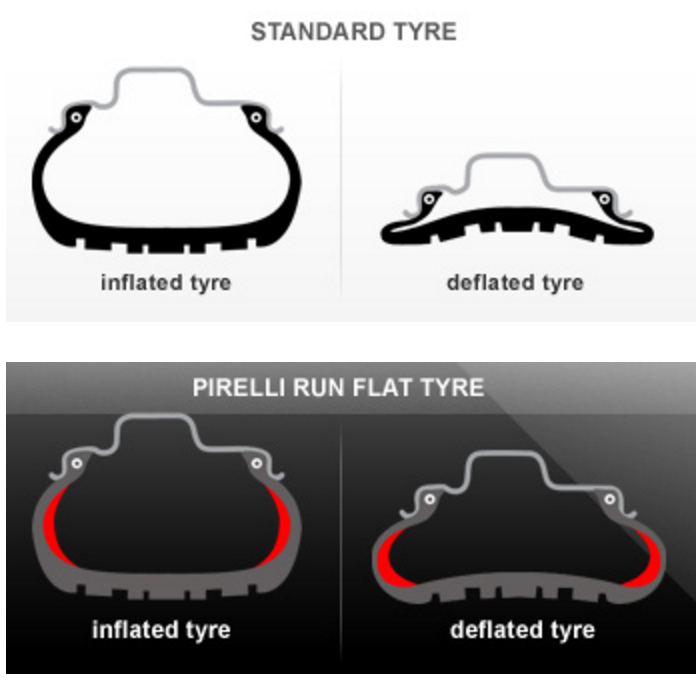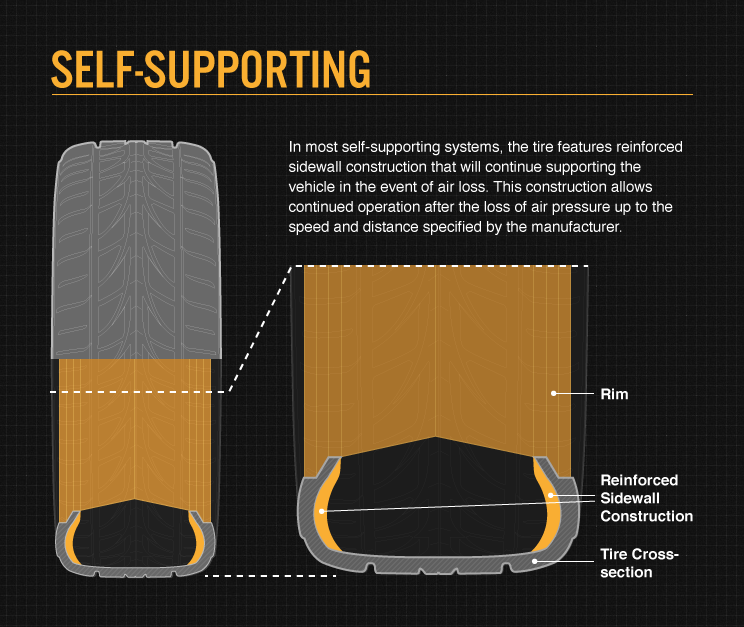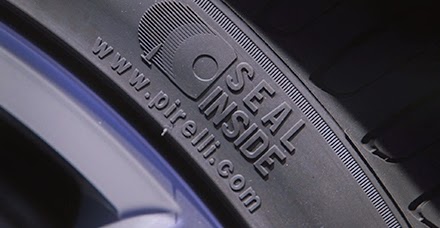Run-Flat Tires: What are they? How Much do they cost? Should I use them?

What is a run flat tire?
A run-flat tire is either a pneumatic vehicle tire specifically designed to resist the negative effects of deflation when punctured or the term may also refer to a standard wheel and tire that has a run-flat device affixed, see ‘auxiliary-supported’ below. This enables the vehicle to continue to be driven (at reduced speeds, typically under 55 mph) for limited distances (up to 10 mi depending on the tire/device).
A tire puncture for regular people is unfortunate, however a flat tire in a protective services scenario one of the most inopportune circumstances we could face while driving a client. Roadside assistance works, but waiting an hour with your principal in the car is not the answer. Similarly, changing a spare if also not ideal given those circumstances. We do have several methods of plugging a tire quickly, which we discussed in another article, linked below:
How to plug a tire: Flat tire repair techniques
Run-flat tires are meant to support the vehicle enough to maintain operable speeds in order to get out of the area or to a repair facility. If it sounds too good to be true, it probably is, right? Well everything comes with a trade-off, and we will discuss the pros/cons below.
There are three major run fat tire technologies currently in use:
Self-Supporting Tire
AKA Zero-pressure tires, are the most common technology and this is simply where the tire’s sidewalls are reinforced to support the vehicle when deflated.
Pro:
• Better blow-out stability: Steering and handling will degrade, but remain well enough considering the circumstances.
Cons:
• Rapid tread wear: J.D. Power found run-flat tires being changed 6,000 miles sooner than standard tires.
• Harsher ride from the stiffer sidewall.
Self-Sealing Tire
Rather than being designed to operate without air, this type has a layer of sealant inside the tire designed to maintain air pressure when punctured.
Pro:
• Strongly performs like and resembles a standard tire.
Con:
• Typically, this only works if the puncture is less than 5mm and is near the center of the tread.
Auxiliary-supported
Using a support ring attached to the wheel, this type can support the weight of the vehicle during deflation.
Pro:
• Unsurpassed ability to carry heavy vehicle loads for long distances at high speeds.
Con:
• Lessened ‘drivability’ and potentially harsh ride from the tire ‘bottoming out’ on the device
How much do they cost?
Typical costs: Approx $200-500 per tire for a passenger vehicle, or about 50%-200% more than standard tires. Goodyear offers standard tires for $110-$200 MSRP or run-flat tires for $250 to $350 for the same application. The best benefit as to cost comes from the auxiliary supported variety in which the device can out last several tire changes, as it remains affixed to the wheel within the tire.
Should I use them?
Research your options and see what’s best for you is going to be your best answer. Take into consideration the pros/cons and make a decision based on your task, threat and environment.




